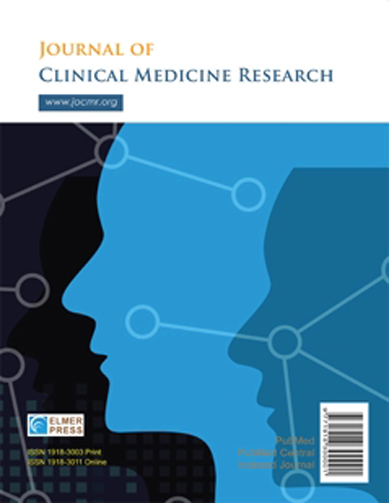Pericardial Fat Tissue as a Predictor of the Severity of Acute Coronavirus Infection COVID-19
DOI:
https://doi.org/10.14740/jocmr6324Keywords:
COVID-19, SARS-CoV-2 infection, Obesity, Pericardial fat tissue, InflammationAbstract
Background: Coronavirus disease 2019 (COVID-19) and obesity remain pressing global health concerns. Identifying predictors of severe disease is of particular importance. Pericardial fat tissue (PFT) is a known source of metainflammation due to its secretion of adipocytokines and inflammatory mediators. Moreover, cytokine storm plays a major role in COVID-19-related mortality. This study aimed to investigate the association between preexisting PFT volume and inflammatory markers in patients with COVID-19.
Methods: The study included 290 hospitalized patients with confirmed COVID-19 infection. Based on PFT volume (above or below 3.45 cm3), patients were divided into two groups: with and without pericardial obesity (PO), consisting of 132 and 158 individuals, respectively. Clinical, laboratory, and imaging data were analyzed. Statistical analysis was performed in Statistica 12.0.
Results: Significant intergroup differences were observed in the PO group for the following variables: male sex (P < 0.001), body mass index (BMI) (P < 0.001), obesity (P < 0.001), and history of diabetes mellitus (P = 0.003). No significant differences were found in lung computed tomography (CT) severity scores. However, patients with PO showed significantly lower oxygen saturation (SpO2) levels (P = 0.014) and a higher frequency of SpO2 ≤ 93% (P = 0.012). Ferritin levels were significantly higher in the PO group (median 440 (274.00 - 552.70) vs. 292.55 (156.00 - 521.50), P = 0.010). Linear correlation analysis revealed a positive association between PFT volume and age, BMI, glucose, ferritin, C-reactive protein, and D-dimer levels, and a negative correlation with oxygen saturation. Multivariate logistic regression confirmed an independent association between PFT volume and SpO2 ≤ 93%. Receiver operating characteristic (ROC) analysis identified a threshold PFT volume of 3.45 cm3 for predicting increased risk of severe COVID-19 (SpO2 ≤ 93%), with sensitivity of 66.7%, specificity of 65.0%, and area under the curve (AUC) of 0.710 (95% confidence interval (CI): 0.551 - 0.868, P < 0.001).
Conclusions: Our data suggest that a PFT volume greater than 3.45 cm3 is a potential predictor of severe COVID-19.

Published
Issue
Section
License
Copyright (c) 2025 The authors

This work is licensed under a Creative Commons Attribution-NonCommercial 4.0 International License.









